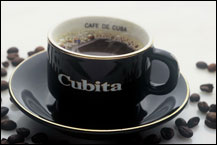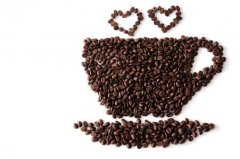Caffeine is the most conspicuous of all the ingredients of coffee.
Caffeine
Caffeine is the most eye-catching of all the ingredients of coffee. It belongs to a kind of phytoxanthin (animal muscle component). It has the same properties as theobromine contained in cocoa. Green tea contains the same theophylline, and the percentage of reduction after baking is very small. Caffeine has a very extensive effect. It will affect the brain, heart, blood vessels, gastrointestinal tract, muscles and kidneys. The right amount of caffeine will stimulate the cerebral cortex and promote sensory judgment, memory and emotional activity. Let the myocardial function become more active, dilate blood vessels and enhance blood circulation, and improve metabolic function, caffeine can also reduce muscle fatigue and promote digestive juice secretion. In addition to this, because it also promotes the kidney function to help the body expel excess sodium ions (chemicals that hinder the metabolism of water molecules), caffeine will not accumulate in the body like other narcotic and excitant substances (narcotic drugs, paint solvents, stimulants, etc.) and will be excreted in about two hours. The biggest bitterness of ─ in coffee flavor is caused by caffeine.
Tannic acid
After extraction, tannic acid will turn into a yellowish powder, which can easily blend into water, and after boiling, it will decompose and produce pyrosylic acid, which will make the coffee taste worse, and if it is soaked and left for several hours, the color of the coffee will become thicker than when it was just soaked, and it is also less tasty, so there is the saying that "it is best to drink it as soon as possible."
Fat
The fat in coffee plays a very important role in flavor. After analysis, it is found that there are many kinds of fat in coffee, the most important of which are acidic fat and volatile fat. Acidic fat means that the acid in fat varies with the type of coffee, and volatile fat is the main source of coffee aroma. Once the fat contained in roasted coffee beans comes into contact with the air, chemical changes may occur and the taste and flavor will become worse.
Protein
The main source of calorie is protein, and like dripping coffee, most of the protein will not dissolve out, so no matter how much coffee you drink, the nutrition you get is limited, which is why coffee will become a sacred food for dieters.
Sugar
Without sugar, you will not only feel the bitterness of caffeine and the sour taste of tannin, but also feel sweet, which is caused by the sugar contained in the coffee itself. After baking, most of the sugar will be converted to caramel, bringing a unique brown to the coffee.
Mineral substance
There are lime, iron, sulfur, sodium carbonate, phosphorus, chlorine, silicon and so on, because the proportion of very little affect the flavor of coffee is not big, combined to bring only a little astringent taste.
Crude fiber
The fiber of raw beans is carbonized after roasting, which combines with the caramelization of sugar to form the hue of coffee.

Important Notice :
前街咖啡 FrontStreet Coffee has moved to new addredd:
FrontStreet Coffee Address: 315,Donghua East Road,GuangZhou
Tel:020 38364473
- Prev

Determine the characteristics of coffee, four flavors and one fragrance
All the color, aroma and taste of coffee are characterized by some chemical changes in raw coffee beans after baking. ◎ bitterness: caffeine, one of the basic flavor elements of coffee. ◎ sour taste: = = tannin acid, the second basic flavor element of coffee. ◎ concentrated alcohol: = = strong coffee. It smells mellow. ◎ sweetness: sugar in raw beans of coffee
- Next

Boutique coffee common sense how to appreciate a good cup of coffee
How to appreciate the taste of a good cup of coffee always coexists with a warm heart. Appreciating a good cup of coffee in the right way is not only easier to appreciate the taste of the coffee, but also to live up to the wishes of the brewer. A good cup of coffee should be clear, bright and transparent. Concentration and turbidity are different. Generally speaking, the causes of coffee turbidity are nothing more than the following:
Related
- Beginners will see the "Coffee pull flower" guide!
- What is the difference between ice blog purified milk and ordinary milk coffee?
- Why is the Philippines the largest producer of crops in Liberia?
- For coffee extraction, should the fine powder be retained?
- How does extracted espresso fill pressed powder? How much strength does it take to press the powder?
- How to make jasmine cold extract coffee? Is the jasmine + latte good?
- Will this little toy really make the coffee taste better? How does Lily Drip affect coffee extraction?
- Will the action of slapping the filter cup also affect coffee extraction?
- What's the difference between powder-to-water ratio and powder-to-liquid ratio?
- What is the Ethiopian local species? What does it have to do with Heirloom native species?

